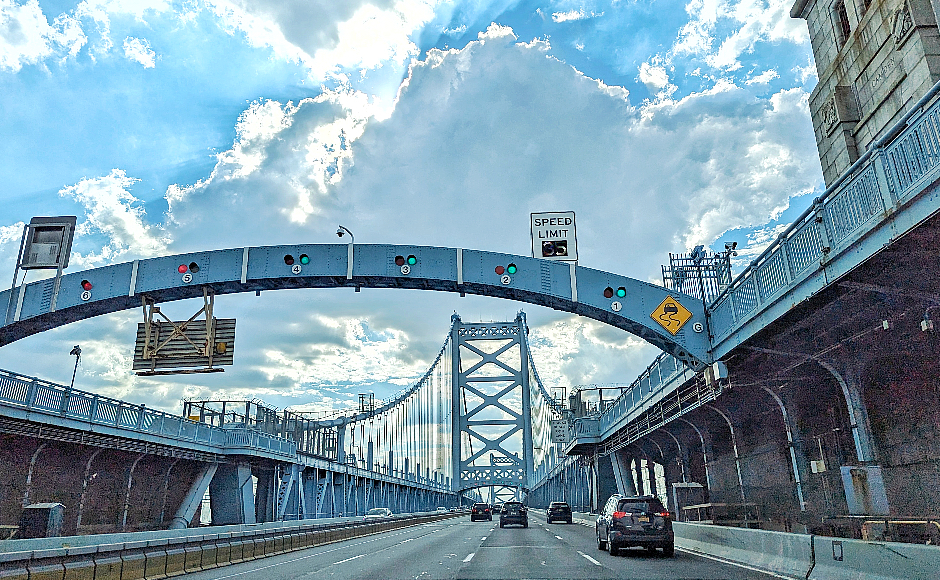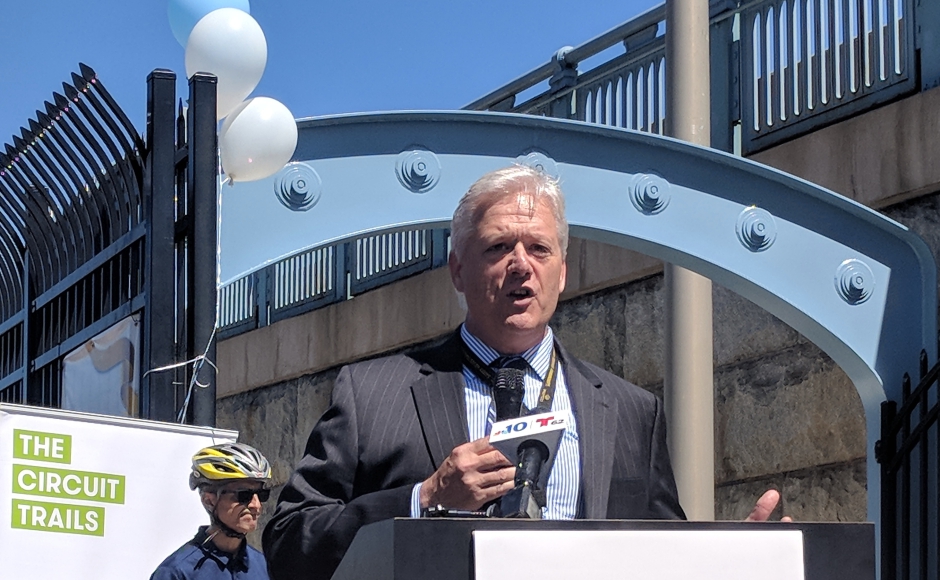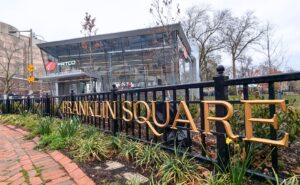For the first time since 2011, tolls on four bridges between New Jersey and Philadelphia are going up.
On Wednesday, the Delaware River Port Authority (DRPA) Board of Commissioners unanimously approved a $1 increase that will raise the round-trip cost for passenger vehicles from $5 to $6.
Prices will increase 20 percent overall for all vehicle classes, rounded up to the nearest quarter-dollar.
Seniors 65 and older pay only half the fare rate, and EZ Pass commuters who cross the bridge 18 times per month or more receive an $18 fare credit.
The change takes effect September 1, and applies to westbound drivers crossing the Ben Franklin, Walt Whitman, Betsy Ross, and Commodore Barry bridges from New Jersey into Pennsylvania.
In 2008, DRPA approved a schedule that ties bridge toll increases to the consumer price index (CPI) every two years starting in 2013; however, the agency has deferred those increases nine times since 2013.
“If you had a child in kindergarten the last time we raised tolls, she’s in her first year of college now,” DRPA CEO John Hanson said. “It’s an entire childhood into adulthood since the last time tolls were raised.”
Hanson said that DRPA has kept its financial controls tight to avoid unnecessary spending, averaging annual operating budget increases of 1.3 percent in the past decade, while inflation rates have averaged 2.5 percent in the same time period.
He also said the Port Authority has paid down $700 million in debt, going from $1.68 billion to about $900 million in that period, while simultaneously investing $1.9 billion in capital projects across the four bridges and PATCO Hi-Speedline.
Those financial actions also help the agency to maintain its bond rating, which enable preferred borrowing rates for those capital projects that keep the infrastructure maintained. Presently, DRPA is managing major projects totaling nearly $800 million through the next four calendar years.
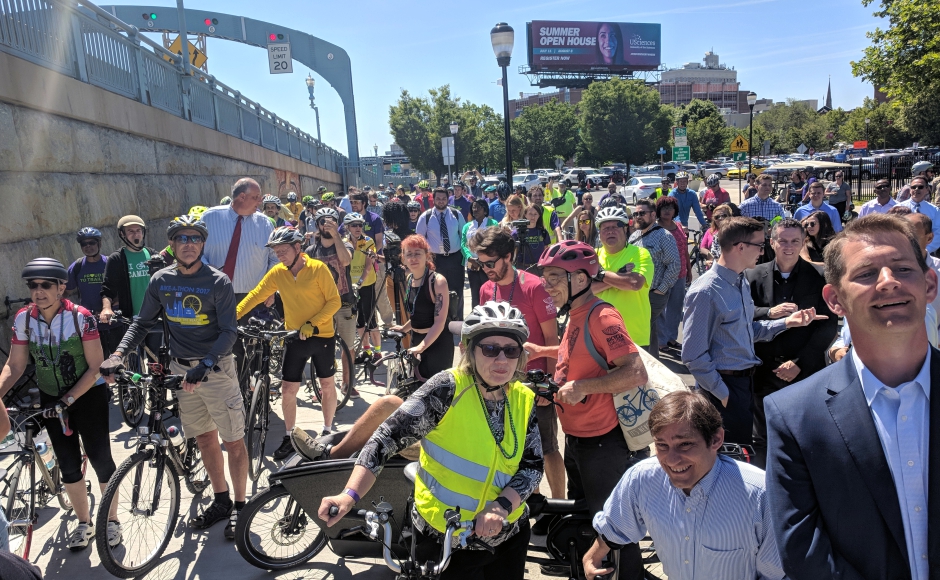
Cyclists wait to cross the Ben Franklin Bridge via a newly completed access ramp in this 2019 file photo. Credit: Matt Skoufalos.
“We’ve been working hard to keep costs low and put all the available money into the bridges and the train line,” Hanson said.
“They’re perpetual assets. They have to last forever,” he said.
“The Ben is 98 years old; the newest bridge we’ve built [the Betsy Ross] was in ‘76.”
DRPA also must grow its revenue for the purposes of retaining and recruiting new police officers for its Transit Unit, Hanson said.
The agency budgets for 150 officers, and right now only has 120 on staff.
Although DRPA Police are under contract until 2025, Hanson said that agreement was recently amended to increase hiring bonuses, retention payments, overtime pay rates, and overtime eligibility, the better to compensate officers during the staffing shortfall.
“Our officers are very vigilant,” he said. “They do a great job. Right now we could use more people on our regular shifts, even on the bridges. Even though the crime rate is not high, there are times when we’re running at the bare minimum number on the shifts.”
Crime isn’t a concern on the bridges, but the CEO said “there’s work to be done” on the Philadelphia PATCO concourses.
“Even though that area’s not our jurisdiction, we could be more supportive in terms of responding, helping them to do what they need to do to deal with it,” Hanson said.
PATCO ridership remains about 50 percent of where it was during the novel coronavirus (COVID-19) pandemic, and “trends in that direction right now are not strong,” Hanson said, adding, “in 2019, we were on pace to set records.”
Its primary service as a commuter rail between stops in New Jersey and Philadelphia has been negatively affected by the uptick in remote work .
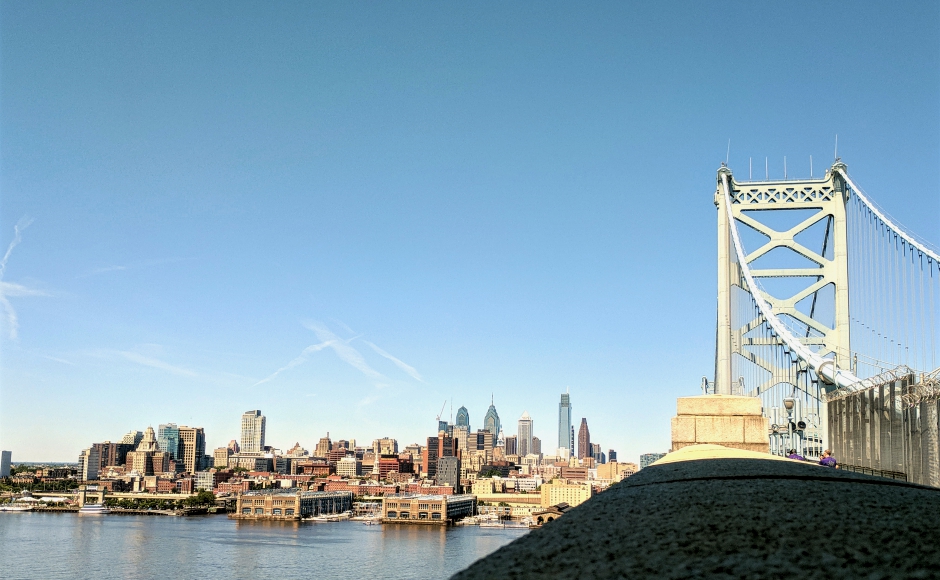
File photo: 2019 view from the top of the Ben Franklin Bridge connecting PA and NJ. Credit: Matt Skoufalos.
Nonetheless, he said, DRPA must maintain the capacity for mass transportation because ridership hinges upon a number of variables that could change usage rates.
“The time to be thinking about that is not when the need is upon us,” Hanson said.
Among those factors, he cited the expansion of transit-oriented development (TOD) in areas near the PATCO stations, including projects in Haddon Township, Collingswood, and Lindenwold, as well as growth in the number of households choosing to drive less or not at all.
“I think as there are more options available, including rideshare for that first mile/last mile, which really puts the whole thing together, and as the cost of car ownership changes for electric and hybrid vehicles, it’s very likely that you’re going to see a shift in the future to mass transit and to rideshare,” Hanson said.
“Those preferences could change quickly to where people are getting on those trains.”

